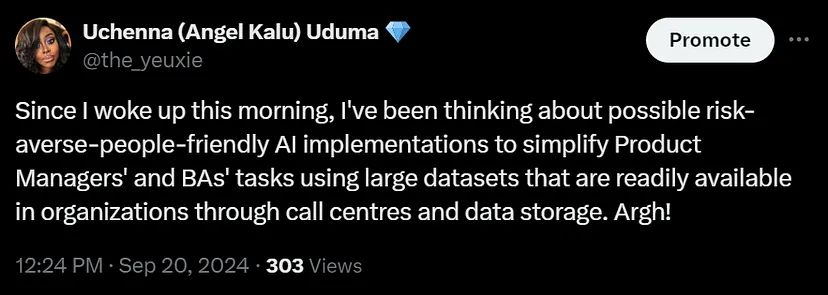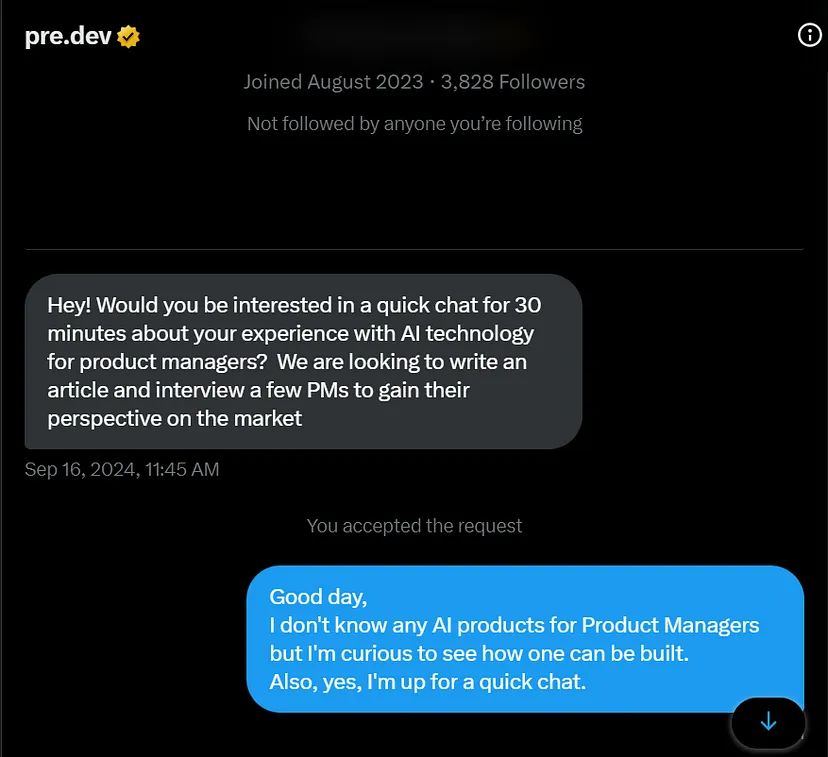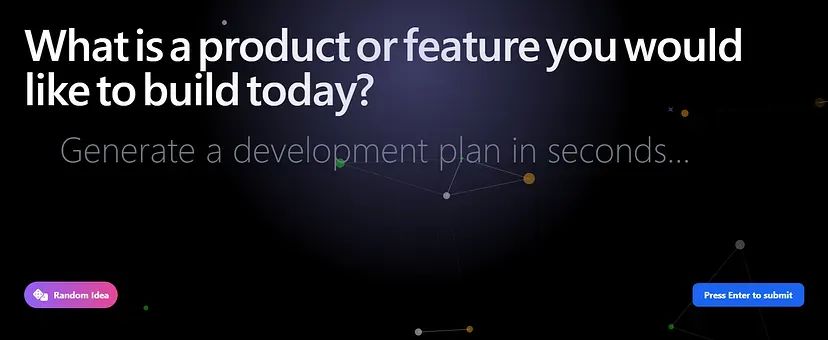and the distribution of digital products.
DM Television
Kerberoasting: A Gateway to Privilege Escalation in Enterprise Networks
Haha! I’m seated here thinking, “Should I change this title from ‘Idea’ to ‘Rant’ instead?” It would be very fitting seeing as a pattern seems to have emerged whereby I observe something and rant about it which inevitably leads to me penning my rant. The rant develops into an idea for a Product or a feature. Sometimes, if I’m lucky, the Company (or another) coincidentally makes those changes or builds the feature/product and Uchenna is a happy girl! That’s the end of my story.
\ Just kidding.
\ As tradition dictates, Uchenna (yours truly) almost always has to turn these rants into a long-winded but, be honest, truly insightful 100-page article. What can I say, I can’t defy tradition, can I? ;)
\ Again, just kidding. Okay, I’ll stop.
\ Now, let’s get into the meat and potatoes of this rant episode.
\ I have observed that companies, especially ones with legacy systems, tend to have overwhelmingly long workflows from the customer to the Product Development teams. Many issues may arise from legacy workflows with minimal or outdated technologies integrated into these processes.
\ However, the biggest issue in a scenario where a digital product is involved is that highly useful user data is scattered across multiple channels within the workflows, and tasks to collect, collate, and synchronize the different datasets are unnecessarily arduous. In some cases, you might even find that datasets overlap or analyses of the data might differ.
\ This issue leads to single points of failure (SPOF) where one person holds and distributes all the data and information that are required to make solid user-centered decisions. The analyses of the respective data are either distilled or bent to suit the will of the SPOF to reinforce the basis for their argument. Therefore, in a situation where the Product team, particularly the Product Manager, has a fraction of the true picture of what their users want, what do you think the result would be?
\ Thus, based on the above musings and my interest in AI implementations, the tweet below was birthed. How do we ensure an uninhibited, undiluted flow of accurate user data and user feedback from human-manned legacy feedback hubs and online channels flow nicely into the river that is the Product Roadmap?

\ How can we use artificial intelligence (AI) to make the jobs of everyone who collects, merges, analyzes, and utilizes these large datasets easier? How can AI help us to shorten these legacy workflows? Is there a way to merge and view user feedback data from call centers to User Research, and even data obtained from digital sources for data analysis into one source of truth? How can the job of a Product Manager in a large organization with legacy tech be further simplified using a software tool that links these streams into my quarterly plan river?
\ Is the “river” analogy played out yet? Ha!
\ Anyway, we all know that if an organization in 2024 is still using “legacy systems, workflows, and tech”, their ability to adapt to change is low and the risk appetite is also low. However, for the sake of this article, the assumption would be that such an organization is willing to experiment with technology, and its risk appetite for adopting complex technology such as AI is high. Let’s just close our eyes and imagine, shall we?
\ Back to my story.
\ So, a few days after posting that tweet, I received a DM from a random handle that I’d never seen before.

\ Of course, there is no evidence to analyze cause and effect, the chicken and the egg. Did the message come about because they had seen my tweet or was this just a random coincidence? Who knows, but it’s a story and I have to highlight the sequence of events. You can draw your conclusions as you deem fit.
\ Anyway, a few hours ago, I decided to check out the link they’d sent — with no expectations or prior knowledge of what this product could be — and I was very pleasantly surprised. Clicking on an unknown link was silly though. Think… phishing.
\ So, the image below is what you see on the hero page.

\ I still wasn’t sure what I was looking at because I had no context but when I saw the above prompt on the hero page, I was transported to a few weeks ago when I’d posted that tweet. So, my response to this question was,
\
“An AI product for product people that collates data from phone calls and turns them into actionable user stories or candidates on the product roadmap.The Product Manager should be able to view all the customer feedback from calls and other sources of customer feedback data.”
\ The next question was, “After the product manager accesses the application, what is the first action they take to view customer feedback?” I was confused by this for some reason but I thought, “Most applications have a sidebar, right?” I knew I was getting too granular with the look and not the functionality but I responded with,
\
“They click on the Feedback button in the sidebar to view all the user feedback organised by date, time, feedback, and action required.”
\ The chatbot then asked, “After the Product Manager clicks on the Feedback button, what specific actions do they take to interact with the organized feedback? For example, do they filter, sort, or select specific feedback entries?” and I responded,
The Product Manager should be able to view all fetched data from every data source that provides user feedback to the company. They should be able to archive each feedback, assign each feedback, select and view details of each feedback. They should be able to sort through the list of feedback by theme. They should be able to link the feedbacks to different channels such as Jira, Prodpad and others. They should be able to generate a user story from each theme that the system has automatically recognised. If the system automatically identifies a theme, when the product manager sorts by that theme, they should also be able to view a list of every feedback with a common theme.
\ My chat conversation with the ghost in my computer, AI, went on like that for a while as I listed the requirements for this imaginary product which we’ll call Byeor from here onwards. I did the same for other user types e.g., Admin and Agent as they too would need their version of this dashboard to grant or remove access and perform other role-specific tasks. As I typed the requirements, a mindmap was automatically generated to help me visually map out the requirements per user type.
\ My view of the application was very interesting — I could view (well, limitedly view) automatically AI-generated documentation based on my inputs. I had the choice of selecting my budget for building Byeor, defining my target audience, and other specifics.
\ Apparently, beyond the paywall, I would be able to provide more details and get the full AI-generated docs including a Gantt chart of the estimated projected duration based on the number of Devs, their skill level, and the cost of hiring them. I would also be able to view the technical architecture of the product, required tech stack, automatically generated Frontend code and so much more.
\ Some of pre.dev’s features are ones that OpenAI’s ChatGPT, the world’s biggest GenAI platform in the world has but it is a more specialized product and I love that for them.
\ I was able to develop my idea for a B2B (Enterprise) AI-powered integrated data platform, Byeor, into something workable within minutes, and as I saw everything come to life from this random idea into a plan for a great product, I got very excited. However, being a Product Manager, I could not help but wonder if such a solution even exists somewhere in the world to begin with because I have barely done much research.
\ The way I picture this is that Byeor’s AI would be able to analyze calls from call centres and automatically generate content that would feed into the feedback part of the dashboard. It would have the ability to categorize the data from other user feedback sources and amalgamate all the data into one source of truth that Product people from Product Managers to Performance analysts can use to make better-informed decisions without all the stress.
\ I have only written about a fraction of the possible capabilities of Byeor but with AI, the possibilities are endless which could lead one to unintentionally over-bloat the product. So, that is something to be mindful of as a Product Manager. That’s where prioritisation comes in but let’s not go too deep.
\ The crux of this entire article is that Byeor appears promising as an Enterprise SaaS product that tackles workflow and data latency problems within large organisations with legacy processes and systems. However, in the same vein, pre.dev is one heck of an AI Product Architect, in my opinion.
\ I believe this software (pre.dev) will be extremely useful to early-stage startup founders who have a vision of what their product looks like but have no technical or business analysis experience. Before becoming a Product Manager, a few years ago, I had a startup that failed due to a lack of planning, insufficient runway and no technical or Product skills. I believe that if I had this tool, I’d at least have gone farther than I did then.
\ All-in-all, Machine Learning (ML) and Artificial Intelligence (AI) are not necessarily things that legacy organisations should fear but should be viewed as tools that if integrated ethically and correctly into our processes and products, can make life much easier for those of us in product teams and the users of our products. It would be faster and easier to know what our users want, incorporate those needs into the backlog and implement them in an agile fashion.
\ N.B: Here’s a link to how pre.dev works in case you are a curious cat.
\ *Curtains fall*
The End.
\
- Home
- About Us
- Write For Us / Submit Content
- Advertising And Affiliates
- Feeds And Syndication
- Contact Us
- Login
- Privacy
All Rights Reserved. Copyright , Central Coast Communications, Inc.